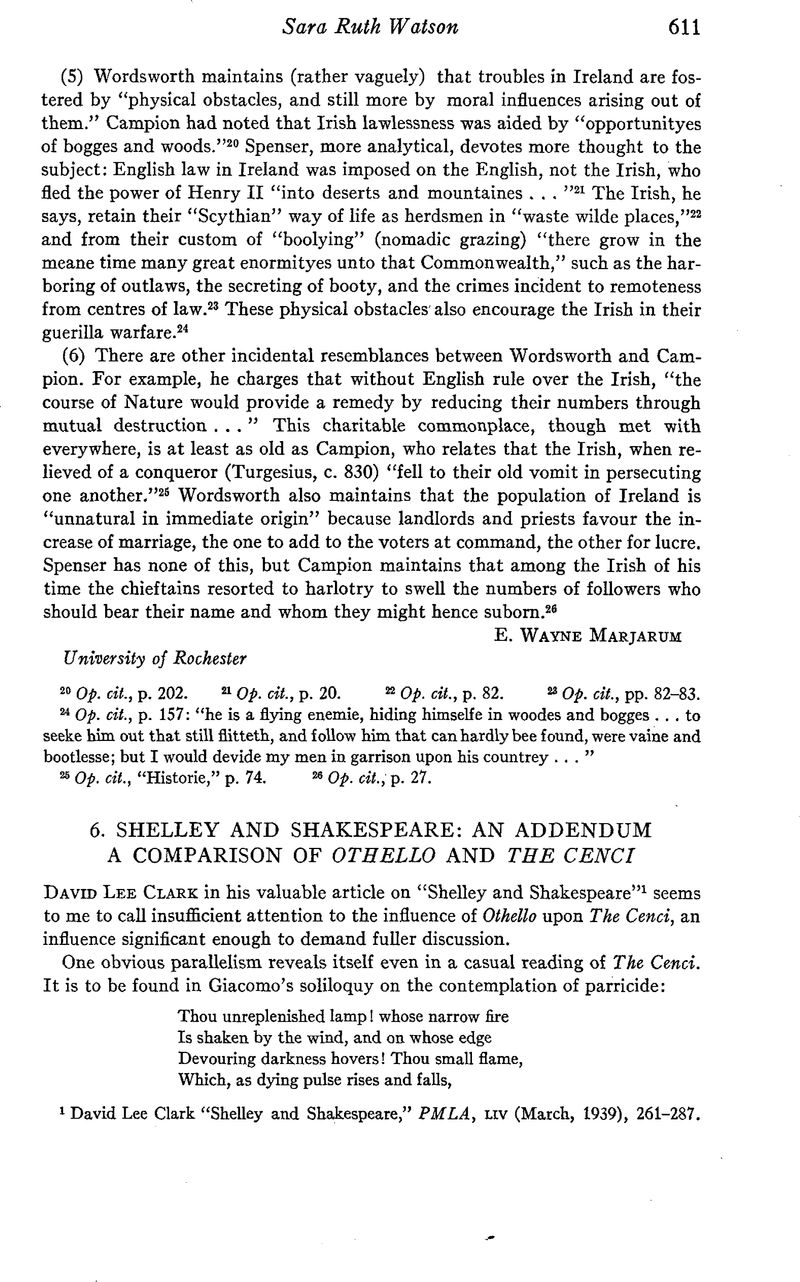Published online by Cambridge University Press: 02 December 2020

1 David Lee Clark “Shelley and Shakespeare,” PMLA, liv (March, 1939), 261–287.
2 Shelley's Poetical Works (Oxford ed.), “The Cenci,” iii.ii.9–52.
3 Othello (Student Cambridge ed.), v.ii.7–15.
4 It is interesting to note that this image received another expression in Book I of Browning's Ring and the Book:
Man's breath were vain to light a virgin wick,—
Half-burned-out, all but quite-quenched wicks o'the lamp
Stationed for temple-service on this earth,
These indeed let him breathe on and relume!
5 The Cenci, ii.ii. 107–147. The expression “unravelled hopes” in this passage also contributes to the Shakespearean flavor.
6 Ibid., v.i.77–83. The simile of the stage is typically Elizabethan.
7 The Cenci, v.i.56–70; Othello, iv.ii.207–222.
8 The Cenci, i.i.67–90.
9 Othello, i.i.41–65.
10 The Cenci, iii.i.207–223.
11 Othello, iii.iii.460–479.
12 David Lee Clark, op. cit., 287.